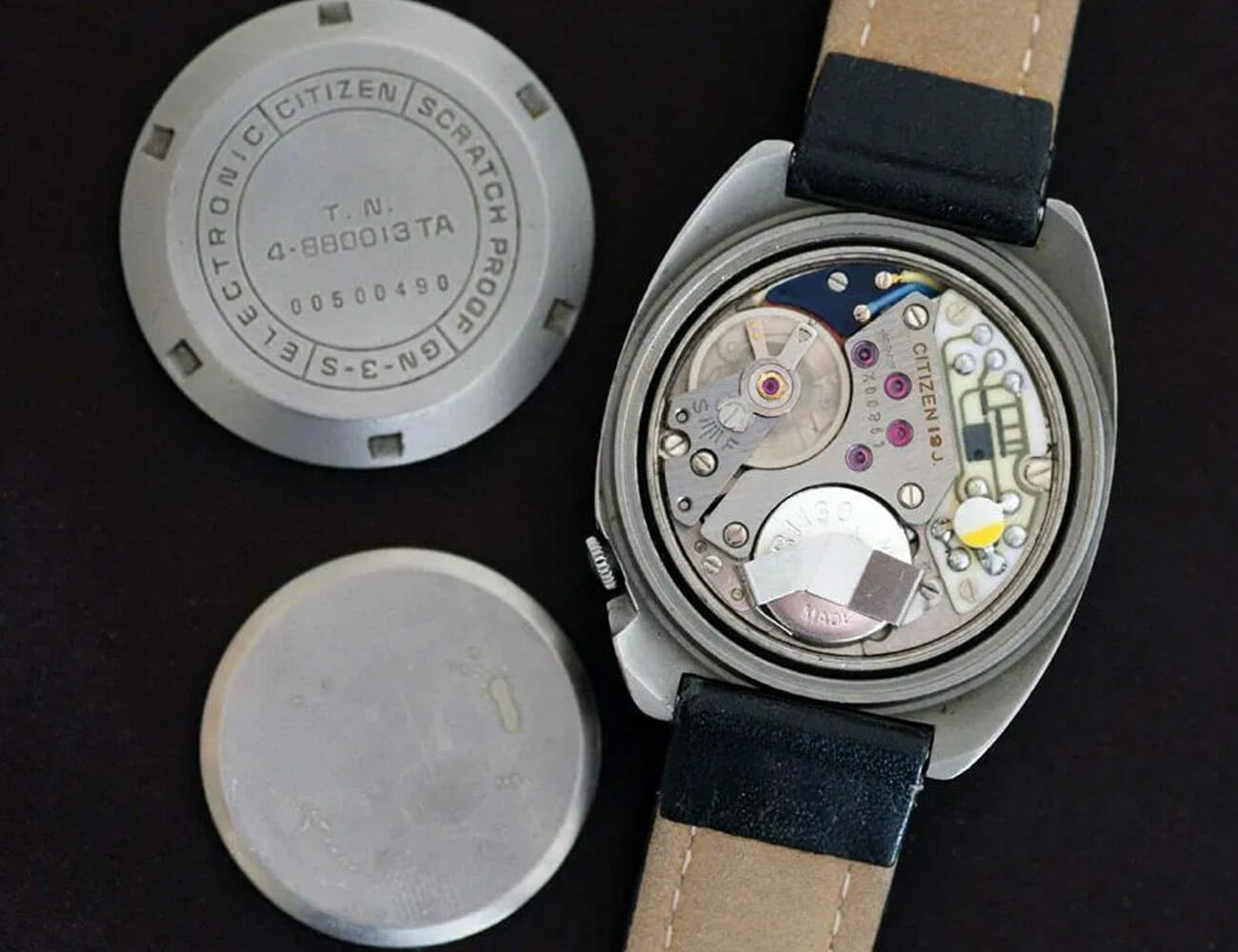Welcome to Watches You Should Know, a biweekly column highlighting important or little-known watches with interesting backstories and unexpected influence. This week: the Citizen X-8 Chronometer.
Most watches are made of stainless steel. It’s a good watchmaking material, but a metal that’s both lighter and stronger is surely superior, right? The watch industry today knows titanium well and celebrates its many beneficial properties. The watch that pioneered its use way back in 1970, however, is all but relegated to obscurity.
It’s so overlooked, that another watch from ten years later was long thought to hold the title of first titanium ticker. Sorry, 1980 IWC x Porsche Design Chronograph, that honor belongs to Japanese watchmaker Citizen which produced only around 2,000 examples of its titanium X-8 Chronometer in 1970. And good luck finding a vintage one today.
More Watches You Should Know
• Sinn EZM-1
• Breitling Navitimer
• Glycine Airman
With all of titanium’s merits, it seems like an obvious choice not only for military and aerospace applications, but also for wristwatches. However, some of the same things that make titanium an attractive “high-performance” material, like its impressive strength, are also what make it more expensive and difficult to work with than steel.
When the watch industry refers to steel and titanium, it mostly means 316L stainless steel and Grade 5 titanium specifically, though there are variations of both with different properties. In general, however, titanium’s lightness is its primary benefit. While watch brands often cite titanium as being “stronger than steel,” it’s also softer — meaning it scratches more easily unless specially treated.
Interestingly, the Citizen X-8 Chronometer’s case back proudly proclaims “scratch proof.” It’s hard to test Citizen’s claim or, if accurate, know exactly how “scratchproofness” was achieved. We do, however, know that the case, bezel, and crown of the X-8 Chronometer are said to have been produced in 99.6% pure titanium. At 45,000 JPY (~$421), it was one of the brand’s most expensive watches at the time it was introduced (about $2,788 in 2020 dollars)
Titanium’s use should’ve been considered groundbreaking at the time, but it’s not even emphasized on the dial or case back — a “T.N.” text next to the serial number is the only overt marker on the watch. Citizen, rather, chose to highlight the watch’s movement: You’ll find “electronic” on the dial and case back, and “chronometer officially certified” alongside an electric-looking logo on the dial. As that designation indicates, this was a highly accurate movement.

Photo by sweephand.org
The X-8 Chronometer ran on Citizen’s battery-powered calibre 0820 that used a balance wheel similar to traditional mechanical movements, oscillating at 3Hz. The Chronometer joined the X-8 family, which was Japan’s first electronic watch, introduced in 1966. The world’s first electric watch was made by Hamilton, but this was still cutting-edge, experimental technology at the time. Electric watches of this type, now a defunct technology, shouldn’t be confused with quartz-regulated watches which were famously introduced in 1969 in Seiko’s Astron.
While the X-8 Chronometer is interesting in other respects, its titanium case is what makes it noteworthy. Aside from being lightweight and strong, titanium has more properties that have been valuable for building rockets and aircraft, some of which are relevant to watches. Compared once again to steel, titanium is said to fare better in extreme temperatures and be less susceptible to magnetic fields. It’s also a good alternative for people allergic to the nickel content in stainless steel alloys. Most of all, however, it’s the wearing comfort afforded by its low density and lightness that makes titanium watches desirable.
The Citizen X-8 Chronometer was not only the world’s first titanium watch, but it’s also unique and attractive. With its 50th anniversary in 2020 — along with industry-wide enthusiasm for vintage watches and remakes — this seems like an opportunity to bring the watch back, perhaps in an enthusiast-friendly automatic version. Most of all, it’s a chance for Citizen to highlight its modern Super Titanium technology.

